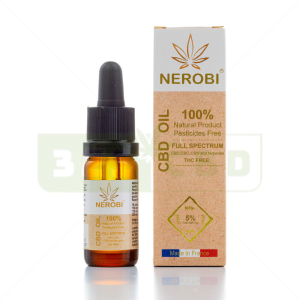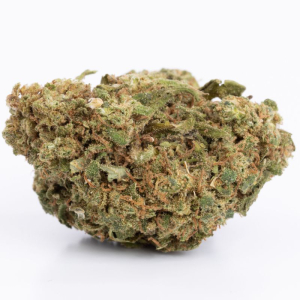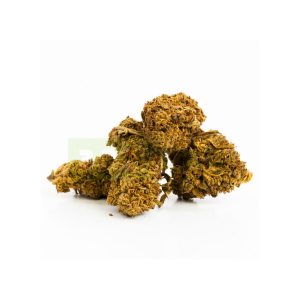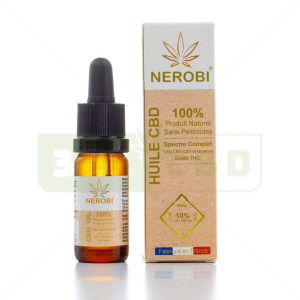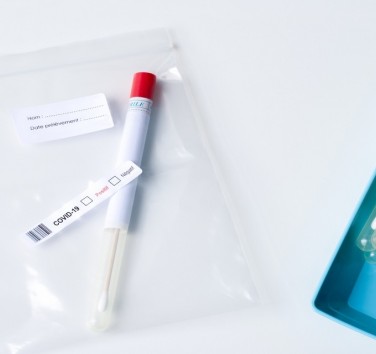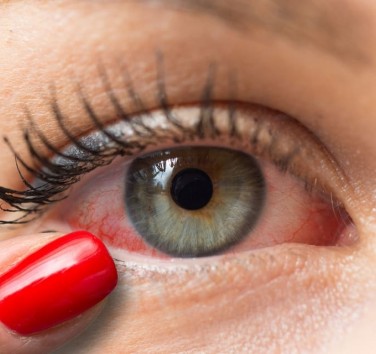Sommaire
- How does CBD get into the hair?
- How long does CBD stay detectable in your hair?
- Detection of CBD in hair: the impact of consumption method
- Passive exposure to CBD and traces in the hair
- The use of CBD hair products and the detection of the molecule in the hair
- Is there a way to reduce the amount of detectable CBD in my hair?
- How does hair color, texture or type affect how long CBD can be detected in hair?
- How can consuming CBD affect the results of a hair test for other substances?
- CBD detected in hair: take your precautions
How does CBD get into the hair?
Before we talk about the time factor, let's take a look at the "how": what is the metabolic process by which CBD ends up in the hair?
When CBD is consumed, whether by ingestion (oral or sublingual), inhalation or topical application, it arrives more or less quickly in the bloodstream. CBD molecules are then transported by the blood throughout the body… including to the hair follicles, located at the base of the hair.
Inevitably, since blood also nourishes hair follicles (which is what your hair grows for), CBD present in the bloodstream can be "embedded" into the structure of the growing hair. Therefore, once the hair has grown, traces of cannabidiol, but also of CBG, CBN or CBC (depending on the spectrum of the hemp product consumed) can be detected at this level. It is also for this reason that the hair is sometimes used for screening tests, insofar as it may contain traces of substances consumed over a more or less long period (we talk about it below). We assure you: CBD is not considered a doping substance by the World Anti-Doping Agency, including in official competition.
The amount of CBD that can be detected in the hair depends on several factors, including the amount of CBD consumed (and therefore the concentration of the product), the method of consumption as well as the frequency.
How long does CBD stay detectable in your hair?
According to a study reported by the National Library of Medicine, CBD can be detected in the hair up to 90 days after its consumption. This is a maximum estimate. The hair follicles, which are supplied with blood, can indeed retain the metabolic residues of CBD for a very long time. In fact, drug tests using hair can often detect substances up to 3 months after consumption. This is because hair grows on average at a rate of 1cm per month, and most hair tests analyze the 3cm of hair "closest" to the scalp.
The "exact" duration, however, depends on the individual. In the same study, scientists identified a number of factors that influence how long CBD is detected in hair.
If you are a regular user of CBD, it is likely that residues of this substance will end up in your hair for an extended period, estimated at least two months after the last dose. In contrast, if you use CBD very occasionally, it will probably be impossible to detect CBD in your hair after three weeks or even sooner (depending on the accuracy of the detection method).
In addition to the frequency of consumption, the amount of CBD ingested plays a role in the detection range. High consumption (quantity, concentration, frequency) will cause an accumulation of CBD metabolites in the body and in the hair follicles, which extends the detection period to several months.
Another key factor is the individual metabolism, which therefore varies from person to person. Individuals with a fast metabolism will be able to eliminate CBD residues from their body more quickly, which automatically reduces the window of detection. We can also mention age, weight, physical exercise or not, etc. In detail:
- Age: Metabolism typically slows with age, which can extend the length of time substances stay in the body. A 55-year-old user will "keep" CBD in their body (and hair) longer than a 22-year-old user;
- Weight: CBD is fat-soluble, meaning it can be stored in fat cells. Therefore, people with more body fat can store CBD longer than those with less. In addition, metabolism may be slower in people with higher weight, which will also extend the duration of CBD detection;
- Physical exercise: practicing physical activity will stimulate the metabolism, thus accelerating the elimination of CBD. However, because CBD is preferentially stored in fat cells, intense exercise could potentially release CBD stored in these cells in the short term, which could temporarily increase CBD levels in the body;
- Diet and Hydration: A healthy diet and proper hydration can also help increase metabolism and eliminate CBD faster.
.jpg)
Detection of CBD in hair: the impact of consumption method
When ingested orally, for example in the form of capsules, oils or edibles, CBD passes through the digestive system and is metabolized by the liver before entering the bloodstream. This is bound to slow its absorption, but the effects may last longer, which means CBD could be detected in the hair for a longer period after oral ingestion.
Sublingual consumption, which involves placing CBD under the tongue, allows for faster absorption into the bloodstream by bypassing the digestive system. It results in a more immediate presence of CBD in the hair, but the duration of detection will be similar to that of oral ingestion.
Topical application of CBD, such as with creams or balms, causes the cannabidiol to be absorbed directly through the skin and not enter the bloodstream (at least not totally). Topical CBD is therefore less likely to be detected in hair unless applied directly to the scalp.
Finally, inhaling CBD, such as with vapes or smoked CBD flowers, allows almost immediate absorption into the bloodstream. CBD will then be detected in the hair quite quickly after inhalation, and the duration of detection will be more or less similar to that of ingestion.
Passive exposure to CBD and traces in the hair
Passive exposure to CBD smoke or vapor could theoretically lead to the presence of CBD in hair, but this is a topic that has not been studied enough to provide a definitive answer.
In general, the hair can absorb certain substances from the environment, especially the components suspended in the smoke. If the hair is exposed to smoke or vapor containing CBD, traces of cannabidiol and other cannabinoids may be deposited on the surface of the hair and on the scalp. However, we remain on a form of superficial deposit which will leave completely with the first washing of the hair.
As previously explained, the detection of CBD in hair is mainly due to the incorporation of the molecule into the hair during its growth from the hair follicles.
The use of CBD hair products and the detection of the molecule in the hair
The use of CBD hair products, such as shampoos and masks, is gaining popularity for several reasons. Indeed, cannabidiol and other cannabinoids are prized for their anti-inflammatory properties. These molecules can therefore relieve inflammation of the scalp and reduce irritation. They can also be part of doctor-prescribed treatment for inflammatory skin conditions that can affect the scalp, including eczema, psoriasis and atopic dermatitis. CBD would also have moisturizing properties and could nourish the scalp to prevent dryness and the formation of dandruff and/or scales (accumulation of dead skin).
Finally, some research suggests that CBD could potentially stimulate hair growth, but more studies are still needed to validate this hypothesis.
As far as the detection of CBD in hair after the use of hemp hair products is concerned, we remain in the same scenario as passive exposure. Indeed, topical application of CBD to the scalp generally does not result in significant systemic absorption of the molecule by the body. Although traces of CBD may be present in the hair following the use of hemp hair products, they will be anecdotal and will probably disappear in the very short term, within hours of using the product or, at worst , in the next wash without the use of these products.
Is there a way to reduce the amount of detectable CBD in my hair?
There is no reliable way to completely remove CBD from hair once it's in there. On the other hand, if you are going to take a drug test, it is recommended that you stop using CBD at least three months before the test. It should be noted that these tests generally look for traces of THC, the psychotropic molecule of cannabis, and not CBD. This is why it is CAPITAL to source exclusively from sellers offering legal CBD products (less than 0.3% THC), such as 321CBD.
.jpeg)
How does hair color, texture or type affect how long CBD can be detected in hair?
The current scientific literature does not allow concluding with certainty that the color, texture or type of hair (oily, dry, etc.) has a significant impact on the duration of detection of CBD in the hair. However, preliminary studies have shown that dark hair tends to absorb and retain more substances than light hair.
How can consuming CBD affect the results of a hair test for other substances?
Hair analysis drug tests typically look for specific metabolites associated with illicit substance use. Therefore, the consumption of CBD per se should not affect the results of such a test, unless again the CBD product being consumed is not legal.
In France, the THC content of CBD products must be below 0.3%, which is far too low to be detected in a drug test. However, regular and heavy consumption of CBD could theoretically lead to detectable levels of THC, although the odds remain very low.
CBD detected in hair: take your precautions
Although CBD is a legal substance in many countries (including France and, more broadly, the countries of the European Union), its presence in the hair can sometimes be incorrectly interpreted as proof of consumption of cannabis for recreational purposes, due to the confusion that can exist between CBD and tetrahydrocannabinol (THC.
Therefore, if you use CBD and need to pass a drug test, it may be useful to mention in advance that you use CBD.


